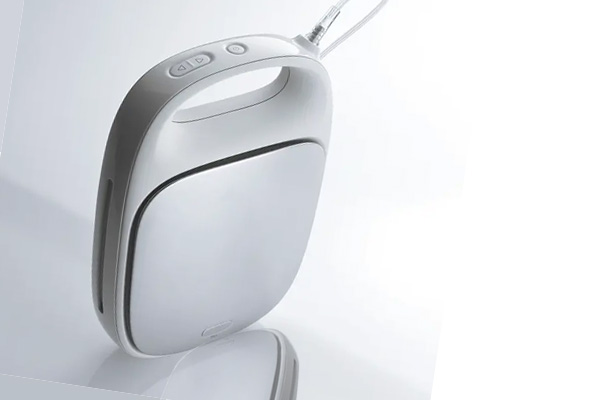Latest case
Precision Medical Micro Injection Molding
I heard that customers often ask this question: "How small can it be?" At that time, micro-molding had already appeared, but it was still a fairly niche industry. As the size of medical equipment continues to shrink (not to mention electronic telecommunications products and automotive components), as customers have said, medical micro-injection molding is not simply applying the injection molding process to the production of small parts. It does not mean that in addition to reducing product size, There are no other changes. From macro to micro, micro-injection molding involves many factors, such as material procurement, structural design, and parts assembly.
1
First of all, what should be the size of the parts corresponding to micro-injection molding? Is there a fixed standard for this value?
Medical microinjection molding has a little-known industry standard definition, which is as follows:
Parts are part of plastic pellets;
Parts weigh less than a gram;
Part wall thickness is 0.005 to 0.015 inches. (125 to 375 microns);
Parts or subassemblies with single micron tolerances, or stacked tolerances resulting in single micron tolerances;
High length-to-thickness (L:T) ratio or length-to-diameter (L) aspect ratio.
Parts are available in sizes up to 6 inches with microscopic features or single micron tolerances.
2
Design for manufacturing (DfM) is very important in micromolding. How is it different from traditional molded DfM?
The DfM/DfA method is called Microns Matter and includes a precise, detailed process diagram of all sub-processes, with all key attributes of the product and assembly identified. These sub-processes typically include mold design/manufacturing, injection molding process variables, gage, material variations across batches, and material moisture percentage ranges.
While every process diagram is different, it is important to eliminate the tolerance percentage error in each process step. For example, build a mold to a 20% tolerance, leaving 80% for other noted variables.
In many ways, it plays a role in Process Failure Mode Effects Analysis (PFMEA) and control planning. Even at the quotation stage, this process can be used to describe the solution in detail, allowing our skilled and experienced plastics engineering staff to carry out a preliminary risk assessment. In this way, the project solution we designed has passed the review and the probability of success will be greater.
Traditional DfM processes are generally not designed to address single-micron build-up tolerances; they primarily target tolerances of plus or minus a few thousandths of an inch. Generally speaking, micro-injection molded parts have tighter tolerances, thinner wall thicknesses, and are more difficult to handle and package, so standards should be more stringent when reviewing all process inputs and the planned percentage of tolerances they will contain. .
3
The importance of mold design in micro-molding can be emphasized.
So can you tell us what the difficulties are?
Both mold design and mold manufacturing contribute to the success of microinjection molding. Whether the mold designer has rich experience is the key to whether the mold can be made. Mold designers know how to micromachin molds with parts that feature features that are only a fraction of the diameter of a human hair. They need to understand proper tool size and depth, the overburning process in EDM, and whether EDM or milling will optimally produce the desired features and surface finish. These skills and those required to make molds are nearly impossible to outsource. When it comes to baseline structures, whether you are designing molds, programming CT scanners, or automating production, mold design and planning are essential so that components and parts can be produced with single-micron tolerances.
4
So how to choose materials? Different materials behave differently in micromolding applications, right?
Different materials do behave differently in microinjection molding, and the transient polymer shear generated by the micro-mold gate diameter is one of the reasons for this difference. It is not uncommon for micro-injection molded parts to require injection pressures of 4 to 50 grams per square inch and fill times of only 0.01 seconds. If the flow is properly balanced, instantaneous but seemingly significant shear rates are beneficial for filling high aspect ratio parts.
We can look at samples of tensile bars that can be molded in just two to three days with gating, shear effects, and 0.001 to 0.008 inch thickness, and extrapolate the injection molding parameters needed to produce the molds to reduce risk. . These tension bars also simulate the gate diameter and gate pattern that will be used in production.

Design engineers may subconsciously avoid designing parts that are too small, believing that they are too thin, not “robust” enough, or too light and fragile to be useful. In many cases, if we don't know how to select materials, or the relevant knowledge is outdated, the project may fall short in the later stages of development. These failures can be prevented early, and the empirical data of micro tensile rods can be used to support the theoretical data of finite element analysis (FEA) to strengthen supervision. Process engineers can use rapid analysis to troubleshoot this filling discrepancy, resolve the current problem, and quickly move on to the next troubleshooting step, such as adding mold vents to vent trapped gases that affect filling.
5
Where do you see the next frontier for miniaturization?
Key market segments such as cardiology, neurology, ophthalmology, automotive, telecommunications products, ENT, fiber optics and other high-precision markets rely on miniaturization technology, so the future market for miniaturization is very broad.
PREVIOUS:Bearing encapsulation TPU injection molding process NEXT:Period
Categories
Blog
Contact Us
Contact: plastic injection molding Company
Phone: +86 181 6575 9852
Tel: +86 755-27164277
E-mail: windward@seaiint.com
Add: Northwest of Huihao Industrial Park, No. 1, Chuangwei Road, Guangming District, Shenzhen

